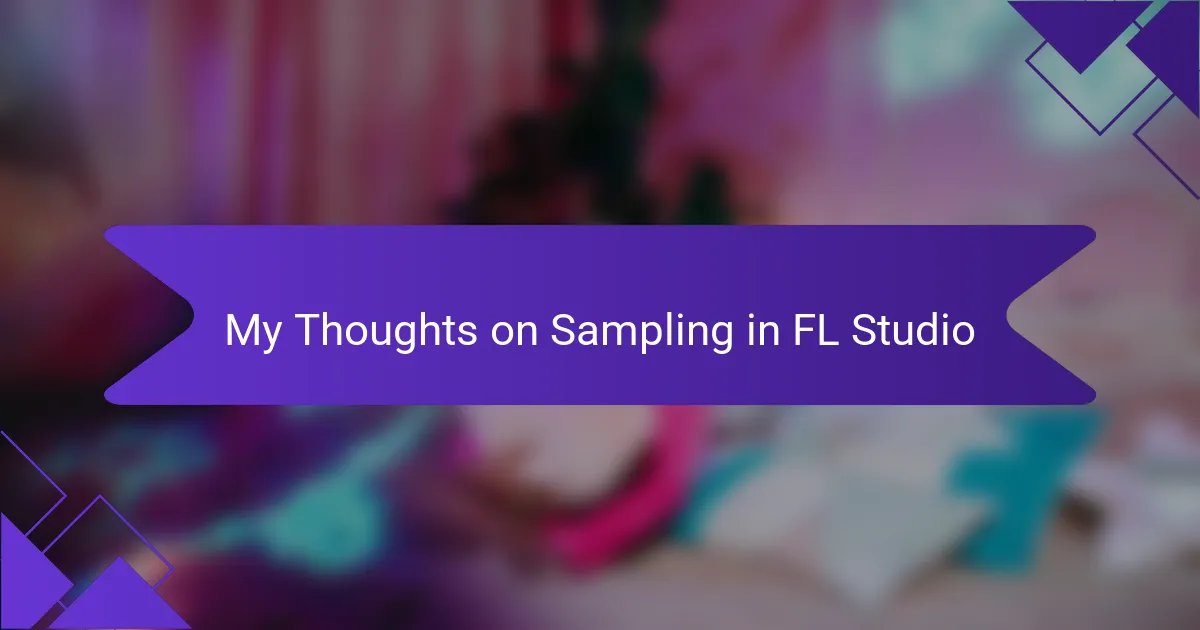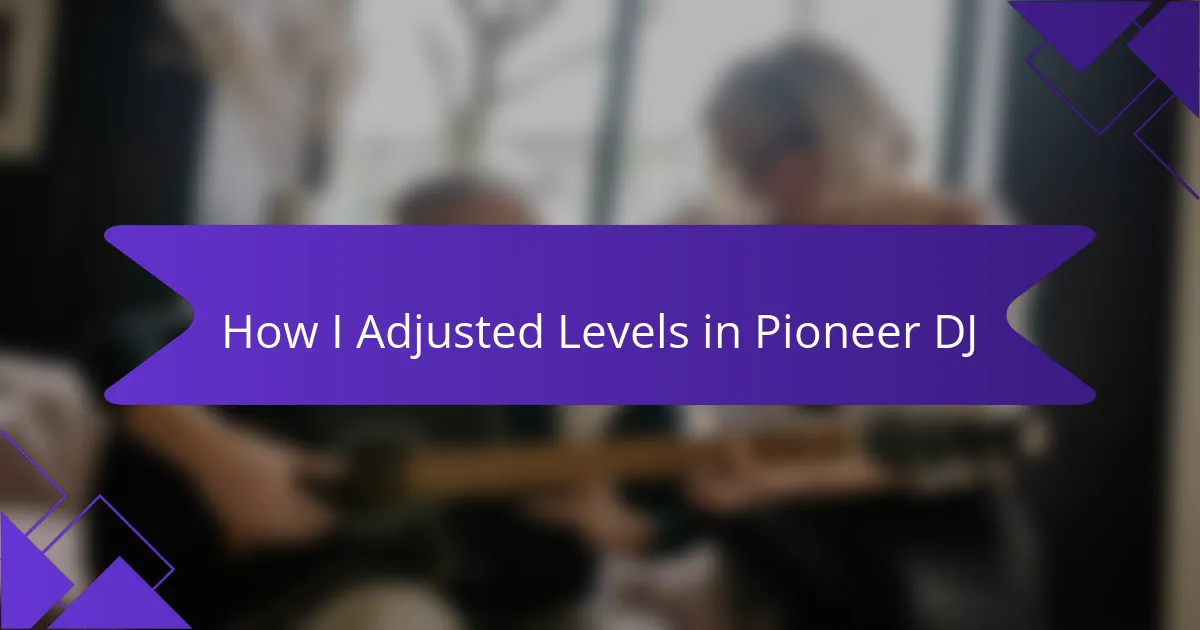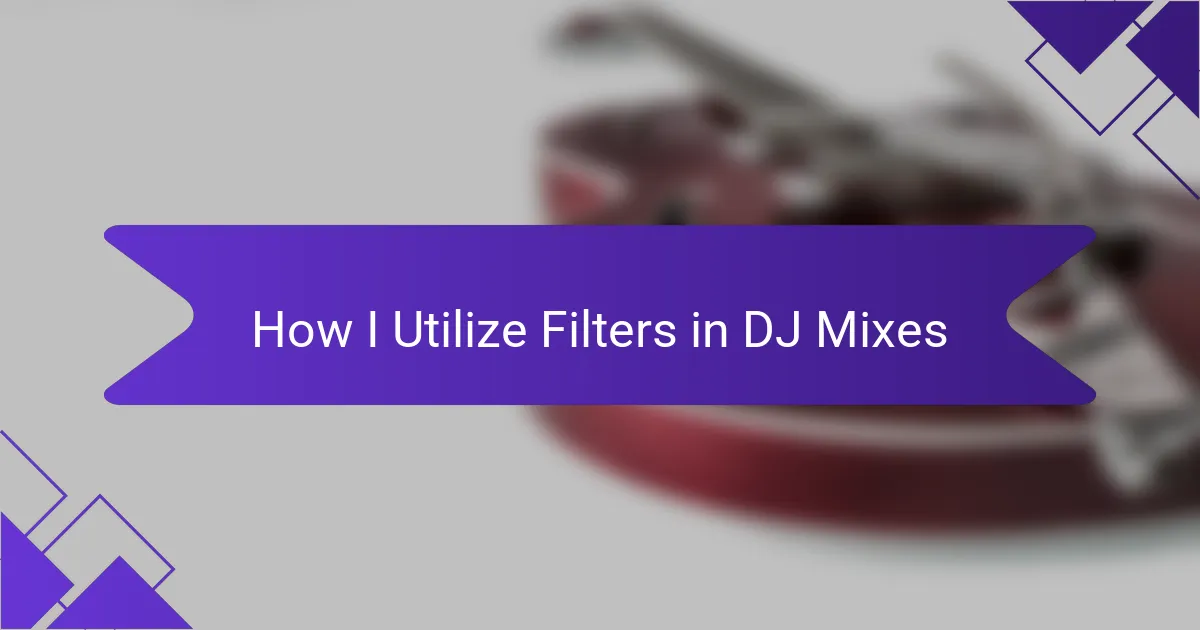Key takeaways
- A playlist is a personal collection of songs that reflects moods and experiences, enhancing life’s moments and memories.
- Organizing music playlists by genre, mood, energy level, or artist improves DJ performance and audience connection.
- TIDAL offers high-fidelity sound quality and extensive features, making it ideal for music curation and organization.
- Creating themed playlists can evoke emotions and create memorable experiences, connecting the listener to specific moments in life.
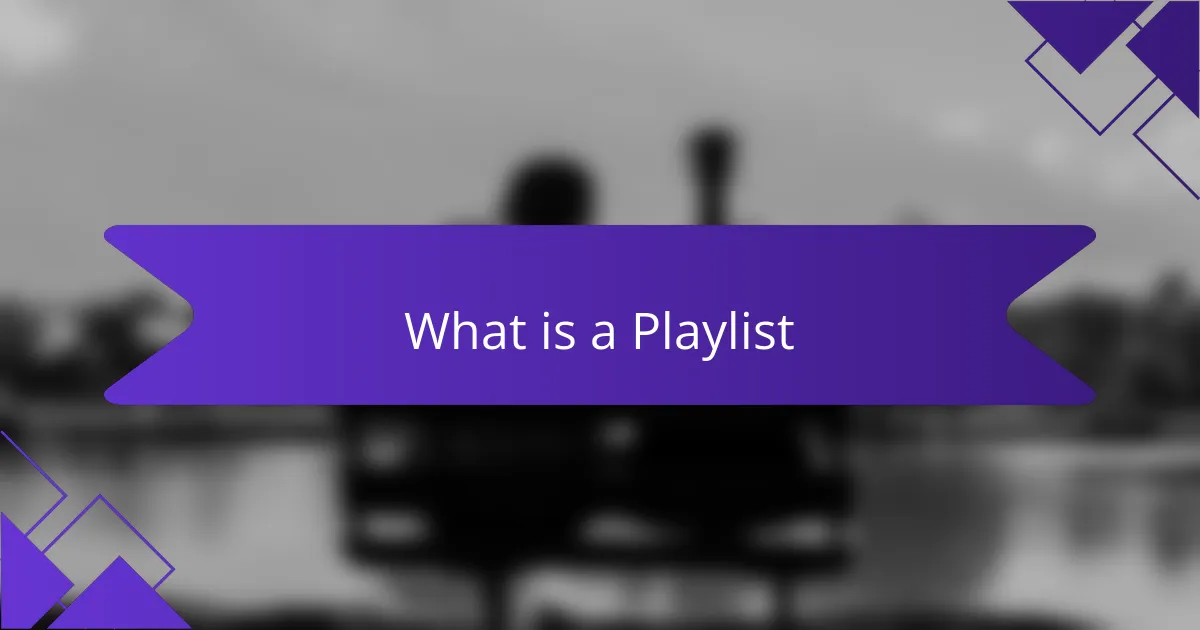
What is a Playlist
A playlist is essentially a curated collection of songs. It’s like a musical scrapbook that reflects our moods, experiences, or even specific events. Sometimes I find myself reminiscing while I listen to an old playlist and it takes me back to a moment I thought I’d forgotten.
Creating a playlist can be incredibly personal. I often think about what I want to express through my choices, be it joy, nostalgia, or even a little heartbreak. Isn’t it fascinating how a particular track can perfectly capture a feeling or a memory?
To me, playlists serve as a soundtrack for life. They accompany our daily routines, help us pump up our energy or chill us out after a long day. What songs would you include to represent your journey? It’s a fun exercise that ultimately lets us share a piece of ourselves with others.
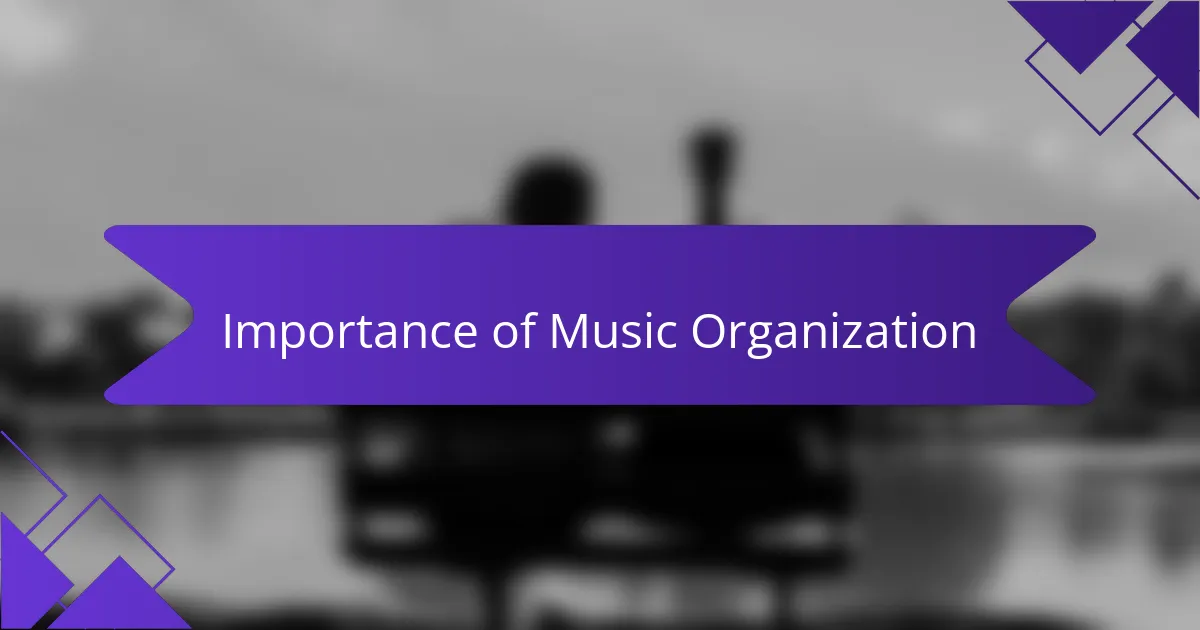
Importance of Music Organization
Organizing your music playlist can be a game-changer for any DJ. When I first started, my playlists were a chaotic mess, and I often found myself scrambling to find the right track in the middle of a set. Once I began to categorize my music by mood, energy level, and genre, I noticed a significant improvement in my performance and responsiveness to the crowd. Having an organized playlist not only saves time but enhances creativity and flow during a gig.
A well-thought-out organization system also allows you to build a connection with your audience. When I clearly categorize my music, I can easily shift gears and adapt to the energy in the room seamlessly. This responsiveness creates an electrifying atmosphere where everyone feels engaged, and that’s what being a DJ is all about.
Here’s a comparison table that highlights various organization methods and their benefits:
| Organization Method | Benefits |
|---|---|
| By Genre | Easy to access specific styles quickly. |
| By Mood | Helps in setting the vibe of the event. |
| By Energy Level | Facilitates smooth transitions during sets. |
| By Artist | Allows for focused sets based on specific performers. |
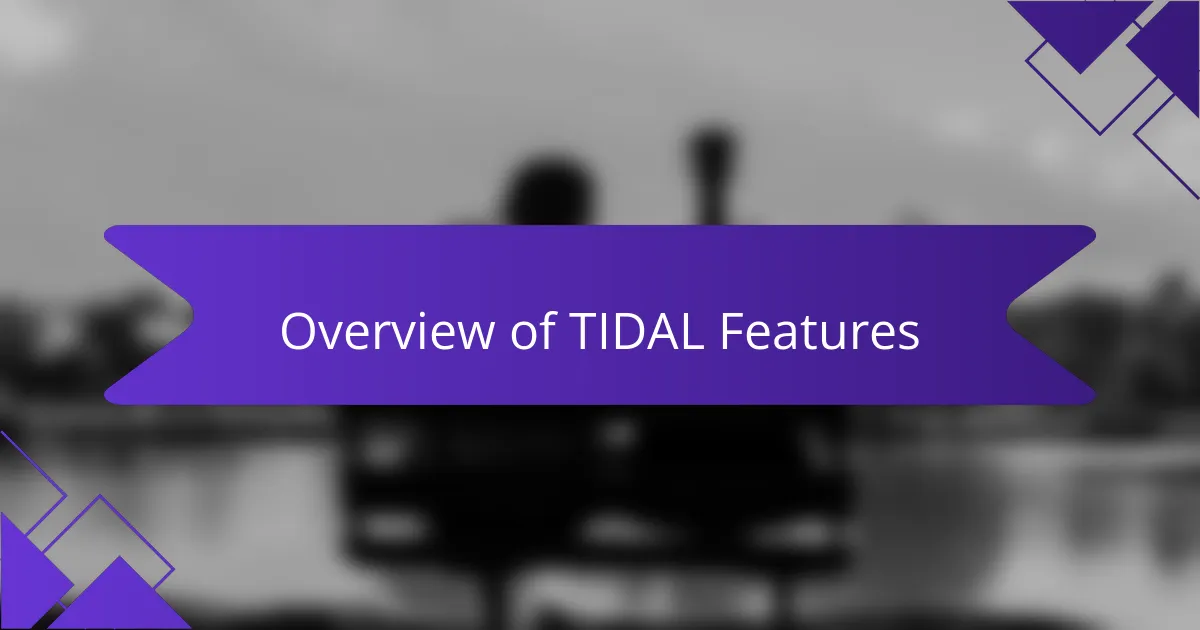
Overview of TIDAL Features
TIDAL stands out in the music streaming landscape with its high-fidelity sound quality and extensive library, which I find incredibly appealing, particularly for a DJ. The platform offers exclusive content like live performances and interviews, allowing me to connect with artists in a way that feels personal and immersive. Additionally, its user-friendly interface makes organizing my playlists a breeze, enabling me to curate my tracks effortlessly.
Here’s a quick comparison of TIDAL’s features that I find beneficial:
| Feature | Description |
|---|---|
| Sound Quality | High-fidelity audio for a superior listening experience. |
| Library Size | Over 80 million tracks available for streaming. |
| Exclusive Content | Access to artist interviews, live performances, and documentaries. |
| User Interface | Intuitive design that makes navigating and organizing playlists simple. |
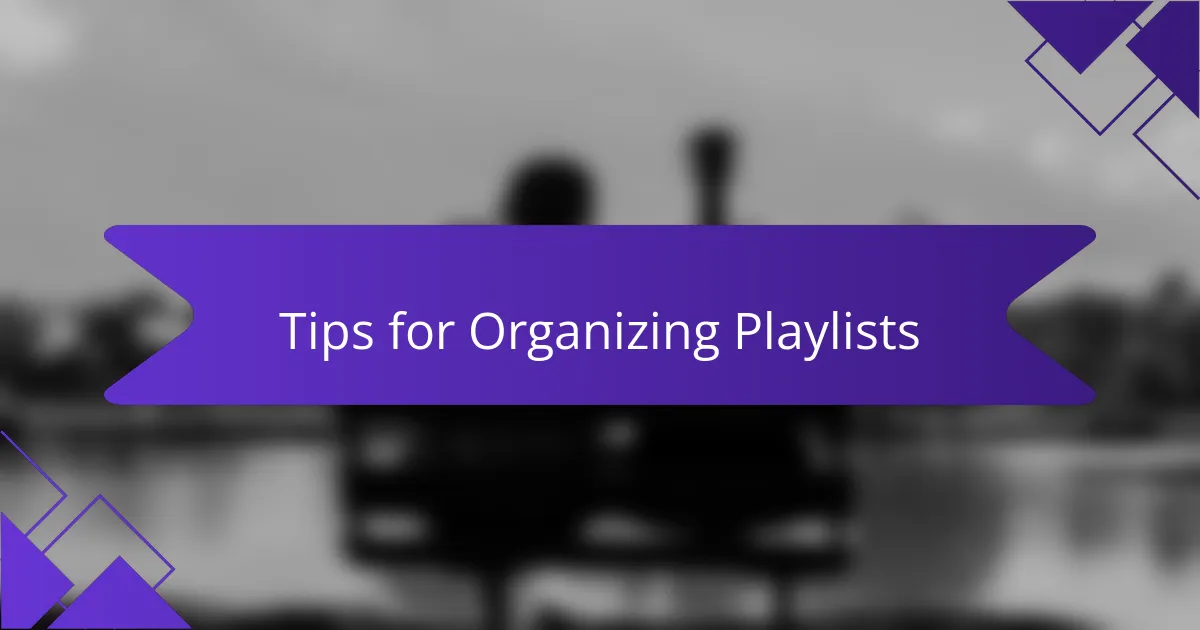
Tips for Organizing Playlists
When organizing your playlists, I find that starting with a theme can be incredibly helpful. For instance, I often create playlists for different moods or occasions, like a chill Sunday morning or an upbeat party vibe. This not only adds clarity but also makes it easier to connect with the right tracks when the moment arises.
Another tip I’ve embraced is regularly updating my playlists. I used to let them stagnate, but I’ve realized that regularly adding new songs keeps things fresh and exciting. Think about it: how often do you discover a new favorite track that instantly shifts the energy of your collection? It’s that thrill of finding something new that makes the experience rewarding.
Lastly, don’t be afraid to use TIDAL’s features to your advantage. For example, I love using tags and comments for each playlist to remind me why I chose certain songs. This adds a layer of nostalgia and intention every time I revisit them. Have you ever listened to a playlist and remembered exactly why each song was meaningful at that time? It’s a beautiful reminder of our musical journey!
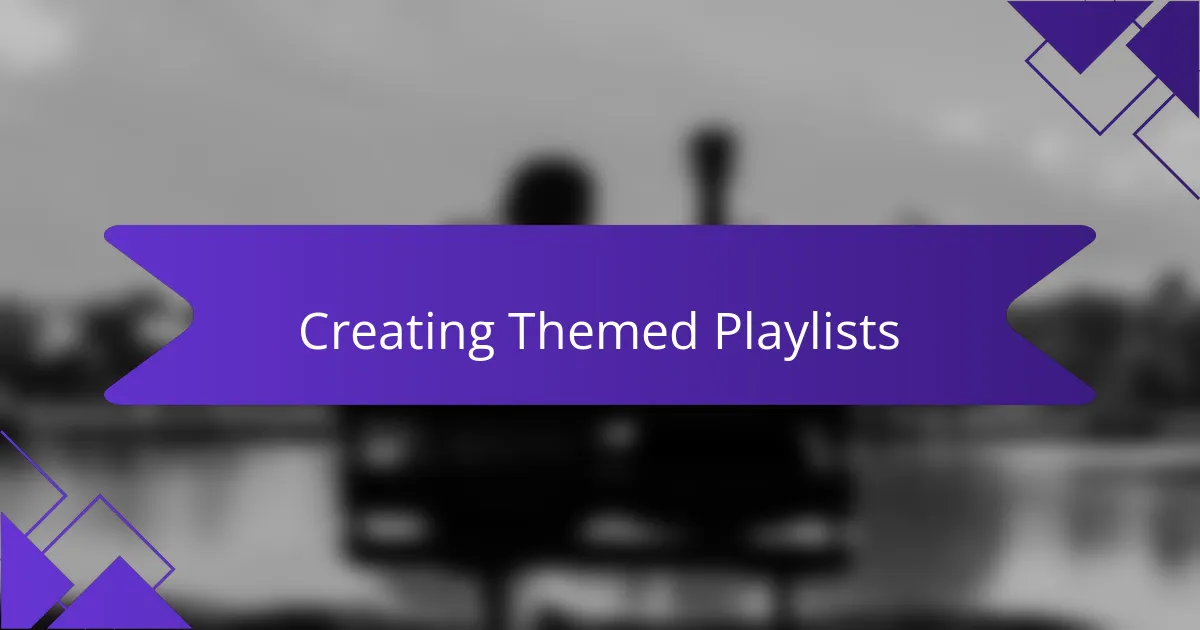
Creating Themed Playlists
Creating themed playlists has become one of my favorite ways to express different moods and moments in my life. For example, I love curating a “Feel-Good” playlist filled with tracks that instantly lift my spirits. Each song serves as a tiny celebration, reminding me of joyful times or fueling my enthusiasm for the day ahead. Isn’t it amazing how a collection of songs can turn an ordinary day into something special?
When I’m feeling reflective, I often assemble a “Nostalgia” playlist, filled with classics that transport me back in time. I can’t help but smile every time I hear a song that reminds me of my high school days. Those tracks have rich stories and emotional weight, weaving a tapestry of memories that I cherish deeply. Have you ever felt a surge of emotions just by hearing a familiar tune?
I’ve also realized that some themes can connect with audiences on a deeper level. For instance, a “Late Night Vibes” playlist featuring relaxed grooves can set the perfect atmosphere for a cozy gathering. Knowing how to create a mood through music not only enhances my sets but also resonates with listeners, making the experience unforgettable. This connection is what truly elevates the power of a themed playlist.
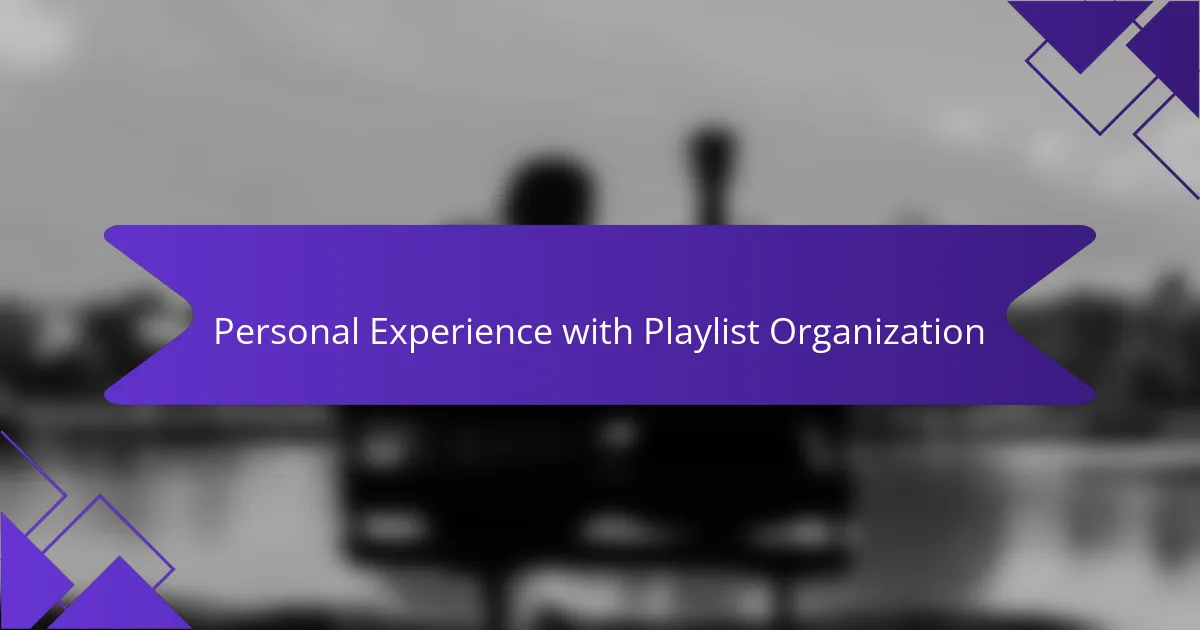
Personal Experience with Playlist Organization
Organizing my playlists has become a transformative part of my musical journey. When I first dived into music curation, I struggled to find that perfect song amidst a sea of tracks. I remember the frustration of rifling through countless files during a set. It was a game-changer when I finally categorized my music by vibe and occasion—it felt like I was finally able to communicate with my audience rather than just play songs. Have you ever gotten that rush when everything just clicks?
One of my favorite experiences with playlist organization was during a sunset gig. I meticulously arranged a “Chill Vibes” playlist, focusing on tracks that evoke relaxation and contentment. As the sun dipped below the horizon, I could sense the crowd connecting with the music. Each song perfectly matched the serene backdrop, creating a magical moment that transcended the ordinary. Isn’t it incredible how music can amplify such experiences?
I also discovered the joy of revisiting old playlists. Recently, I stumbled upon a set I made during a challenging time. Though it was filled with poignant tracks, it reminded me of my growth and resilience. Reflecting on it brought a mix of nostalgia and gratitude, showing me how playlists are not just collections of songs; they’re snapshots of our lives. What stories does your music tell about you?

Final Thoughts on Playlist Management
When it comes to playlist management, I can’t stress enough the importance of finding a system that resonates with you personally. I’ve experimented with various styles, and what works for me might not work for you. Each time I tweak my organization, whether it’s by mood or energy, I feel like I’m rediscovering a part of my music collection. Have you ever noticed how a small change can reinvigorate your entire listening experience?
One thing I’ve found useful is regularly revisiting my playlists. This process gives me a chance to reflect on my musical evolution. I remember one particular evening when nostalgic tracks from my “Throwback Hits” playlist prompted a flood of memories and emotions. It struck me how music not only serves as a backdrop for our lives but also archives our journey through various stages. Do you have playlists that evoke specific memories for you?
Ultimately, effective playlist management is about creating a sonic landscape that captures your essence and connects with your audience. The more thoughtful I am about my organization, the more immersive my sets feel. Every playlist I create becomes a chapter of my story. Isn’t it amazing how each song can transport us back to significant moments? That’s the power of music and a well-organized playlist!
